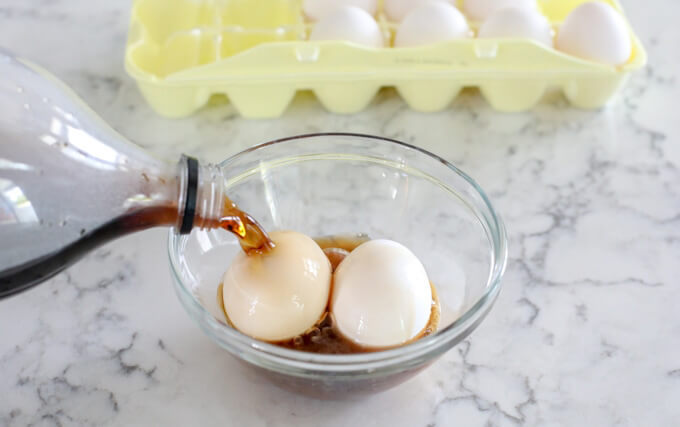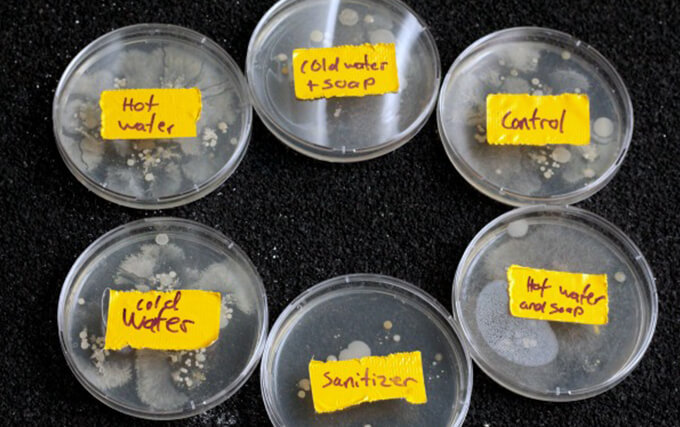
What is health science for? Health science aims for the improvement of human and animal health. It is done through scientific research, studies, knowledge and the application of that knowledge to improve health and cure diseases.
And what could be the best way to teach health science to kids? By giving them a personal experience and simulation of what you would want to teach them. Books and references can discuss the facts, but hands-on activities are more effective. It is because involvement helps to understand something better. How can we do it? Through simple science experiments and activities. Be it for parents or teachers, here are some health science experiments and projects for kids to promote a healthy lifestyle.
These should all be done with an adult’s supervision.
Sugar buzz experiment
This is an effective nutrition science experiment for elementary students.
Materials:
- 2 clear glasses
- Corn syrup
- Red food color
- Teaspoon
- Sugar
- Flour
Procedures:
- Pour corn syrup in both glasses until half-filled. Put red food color on both to represent our blood.
- Put a teaspoon of flour in the first glass and a teaspoon of sugar on the other. Observe what’s gonna happen.
The flour will not blend in the mixture right away like the sugar. This shows that carbohydrates are absorbed by the blood at different rates. Sugar has smaller molecules making it easier to be absorbed by the blood compared to flour which has larger molecules. This explains why when we eat flour-based products like bread, beans, and potatoes, it takes time before the body absorbed its molecules so we need to exercise for better blood circulation.
Tooth decay experiment

An easy science project to teach kids about dental care.
Materials:
- 4 hard-boiled eggs
- Jars
- Water
- Coffee, dissolve in water
- Cola
- Vinegar
- Toothpaste and toothbrush
Procedures:
- Fill the jars with liquid. One with soda, the other one with coffee, the other one with vinegar and the other one with water. These will represent the drinks that often kids love. Be sure that the eggs are totally submerged in the liquid. This will represent our teeth. Cover the jars and leave it overnight.
- Check the eggs the following day. Remove the liquids in each jar. Put the eggs over paper towels. Let the children observe how the eggs looked. The eggshells represent the teeth enamel.
The eggs in cola and coffee are stained while the vinegar dissolves the shell because of its high acid content. The egg in water apparently doesn’t change.
- Get a toothbrush with toothpaste and carefully brush the stained eggs – you can expect a whiter look after.
This shows the importance of choosing drinks that will not harm our teeth. But just in case we consume cola or coffee, it is better to brush the teeth to keep stain at bay.
Read also: Dental Health and Hygiene Kids Edition
Bread and germs experiment
A simple kids’ science project that is applicable to a group. This activity can be performed in a classroom or after kids’ playtime in your house.
Materials:
- 3 slices of loaf bread
- 3 salad bags with ziplock
- Handwashing soap
- Water/access to water
Procedures:
- Put the first bread slice on a sandwich bag. Sealed.
- Put the second bread slice on a plate or a tray. Let the kids touch their palms in the bread slice. Put it in the sandwich bag. Sealed.
- Let the children wash their hands using soap and water for twenty seconds. Rinse very well.
- Put the third slice of bread on another plate or tray. Let the kids touched their palms in the bread right after washing. Put in the sandwich bag and sealed
- Leave the bags for days and observe.
This shows the importance of washing hands before eating. It can be observed that the bread that is touched after washing kids’ hands and the bread that is sealed right away is still white. The bread that was touched with dirty hands is not just icky and moldy, it has loose its original shape and color.
Read also: Mental Health Activities for Kids
Handwashing and germs experiment

A simple science project you can also do at home using water and oil.
Materials:
- Vegetable oil
- Flax seeds (this will represent the germs)
- Paper towel
- Handwashing soap
- Access to clean water
Procedures:
- Pour vegetable oil and sprinkle flax seeds in a kid’s hand. Let him rub his hands together as if they are putting hand lotion. Let them observe where the ‘germs’ are hiding in his hands.
- Wipe off the oil and flax with a paper towel. Let him examine his hands. Ask him how many hands are left, or how do his hands look and feel.
- Wash the hands with tap water without using soap. Examine the hands and ask him the same questions after wiping it.
- Wash the hands with tap water and soap. You can guide your kid on the proper way of doing it, rubbing the hands, cleaning in between fingers, including the fingernails. It will take about 20 seconds. You can let them sing “Twinkle, twinkle little star” and let him rinse his hands. Wipe it dry with paper towels. Let the kid examine his hands and ask the same questions as you have done in steps 2 and 3.
This experiment will show the most effective ways of washing hands. As one can observe, just wiping it off is not effective. Washing hands with plain water, especially without soap are not enough. Proper washing of hands to remove dirt germs needs the proper amount of soap and water. The length of time washing the hands should also be given an emphasis. This will lead the child to understand the importance of proper handwashing.
Salty potato experiment
A simple food experiment for kids to avoid salty junk foods.
Materials:
- 1 medium potato, cut in half
- 2 glass bowls
- ½ cup of water
- ⅛ teaspoon salt
- Paper tape and marker
Procedures:
- Using a paper tape and marker, label each bowl. One ‘with salt’ and the other with ‘no salt’.
- Put an equal amount of water in each bowl. Add salt in the bowl with the label ‘with salt.’ Stir.
- Put each half of the potato in each bowl, the cut side facing down.
- Set aside for 30 minutes and observe.
The saltwater draws water out of the potato causing it to wrinkle. Just like the potato, salty food and drinks make people thirsty as it draws water from the body. Thus, salty foods and snacks should be taken occasionally with plenty of water to pair it with.
Read also: Fast Food Versus Kids: How to Make Your Kids Win Against Eating Fast Food?
Final words
These experiments can help the kids to understand health science better than just telling and showing it to them. First-hand experiences while teaching is a more effective method for them to learn. These health science experiments and activities will not just make kids understand health easier and better, it can be a fun experience for them.
Read also:
- Kids and Safety the Sooner, the Better
- Teaching Your Kids How To Share Things Is Important
- Summer Chores for Kids: Training them to Become Better


